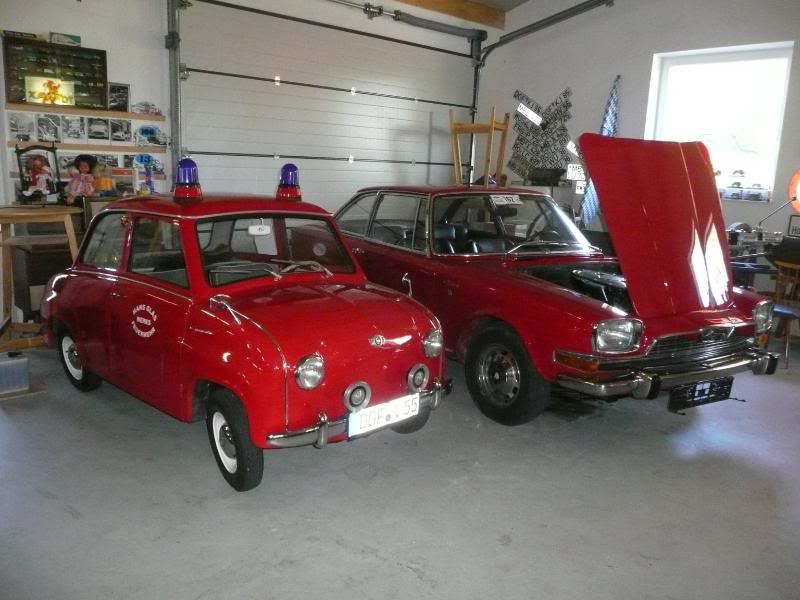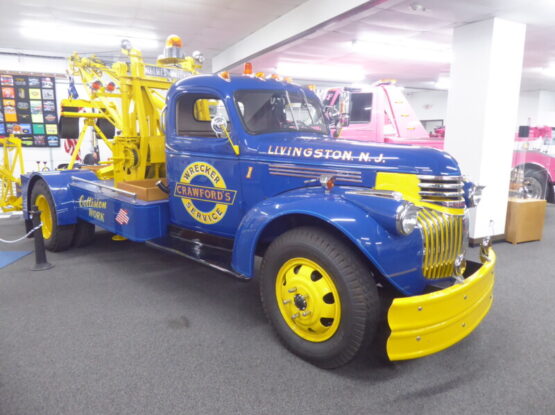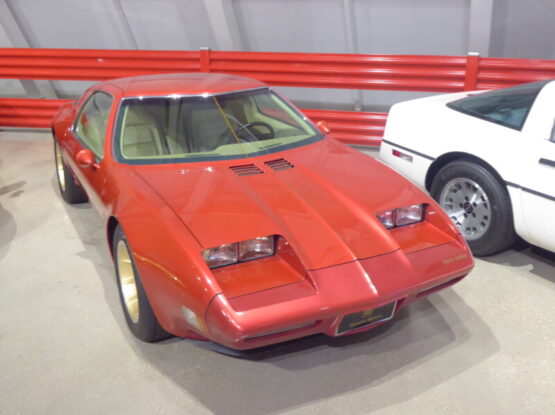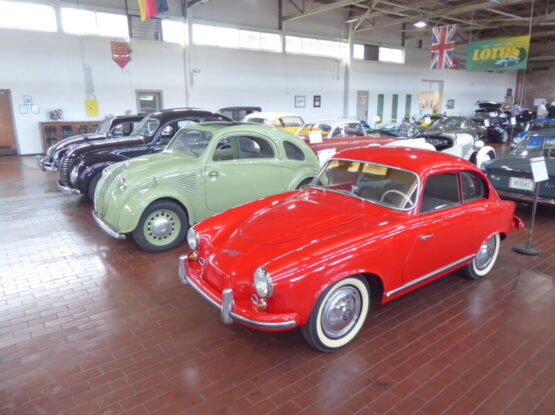

The long established car museums, such as Beaulieu or the Schlumpf Collection at Mulhouse, or for that matter the more recently opened ones owned by manufacturers such as the Porsche and Mercedes collections in Stuttgart and the BMW Museum in Munich tend to get most of the headlines and the coverage, but if you look a little harder, there are still a surprising number of smaller and far less known collections on offer to the enthusiast. On my most recent trip to Munich, I visited just such a place. Located in a tiny village called Moosthenning, it is just a few kilometres north of Dingolfing, a pleasant Bavarian town known to the automotive cognoscenti for the presence of a large BMW plant. As if to prove my point, I asked my passenger, Christian Wimmer, who has lived in the area for many years if he had ever been to this museum. and he said he had never even heard of it. It proved easy enough to find, as having turned north off the A92 Autobahn, discrete signs pointed us to what looked like a large garage construction on the side of a house. We opened the door, to find a typical sort of museum lobby area, and after ringing a bell, Herr Kraxenberger emerged, collected our €3, and proceeded to show us round. He does not speak English, and his German was a bit fast and with quite a strong accent for me to catch everything he said, but Christian was able to act as my translator. The museum is effectively the passion and collection of one man, over many years, and it was truly fascinating. The exhibits are spread out over two storeys. Upstairs contains a series of cars and other memorabilia associated with a number of long since defunct brands all of which ended up in the BMW empire.
BORGWARD, HANSA and LLOYD
Karl Borgward founded his company in Bremen, and enjoyed huge success with his “Blitzkarren”, the Lightning Cart, which was a sort of three wheeled 2hp van which appealed to small traders for delivery jobs. It was also popular with the Reichspost. In 1929 he became Director of the Hansa Lloyd Company and helped to oversee the launch of the Hansa Konsul. In 1937, the Hansa Borgward 2000 was launched, and this car became known as the Borgward 2000, in which form it continued in production until 1942. After the war, the Borgward Hansa 1500 was the mainstay of the range for a number of years. Larger models were added, with this Hansa 2400 making its debut in 1953. Styled very much like the Hudson Super Wasp in the US, it had many features designed for passenger comfort and convenience with a particularly ingenious system of separate heating and ventilation for front and rear seat passengers. A more conventionally styled notchback saloon joined the range in 1954, and production of this fastback shaped car ceased in 1955. making it quite rare. This was the first German car available with an automatic gearbox.

 Originally badged Hansa 1500, production of a new medium sized car started in 1954, and it soon became known as the Isabella, which had been its code name. Sales in the first year were strong, even though the car was more expensive than rivals from Opel and Ford, but it undercut the new Mercedes 180 by some margin. Sadly, though, development had been rushed and the car suffered from a lot of reliability issues which did not afflict the likes of Mercedes, which meant that sales soon reduced dramatically. Borgward responded by adding a more stylish coupe model to the range, and over time more derivatives were offered, including Kombi and convertible models. The Isabella stayed in production until 1962.
Originally badged Hansa 1500, production of a new medium sized car started in 1954, and it soon became known as the Isabella, which had been its code name. Sales in the first year were strong, even though the car was more expensive than rivals from Opel and Ford, but it undercut the new Mercedes 180 by some margin. Sadly, though, development had been rushed and the car suffered from a lot of reliability issues which did not afflict the likes of Mercedes, which meant that sales soon reduced dramatically. Borgward responded by adding a more stylish coupe model to the range, and over time more derivatives were offered, including Kombi and convertible models. The Isabella stayed in production until 1962. Borgward was a true pioneer with novelties such as air suspension, and he made extensive use of automatic transmission, but these were to cost Borgward dearly, as their cars were more expensive than competitors and had a reputation for being somewhat unreliable. By early 1961, it was all too much and the company was liquidated. That was not quite the end, though, as the tooling was all sold to a company in Mexico, and eventually production there did resume, lasting until 1970.
Borgward was a true pioneer with novelties such as air suspension, and he made extensive use of automatic transmission, but these were to cost Borgward dearly, as their cars were more expensive than competitors and had a reputation for being somewhat unreliable. By early 1961, it was all too much and the company was liquidated. That was not quite the end, though, as the tooling was all sold to a company in Mexico, and eventually production there did resume, lasting until 1970. Lloyd first started producing electric powered cars in 1908, adding petrol cars to their range soon after. In 1914 they merged with the Hansa Company to created Hansa-Lloyd Weke AG. The Hansa name was used on the cars that were subsequently produced, with Hansa-Lloyd being confined to trucks. In 1929, when Karl Borgward joined the company, the name disappeared. It was only in 1950 when Lloyd became a notable car producing marque. The first cars, the Lloyd 300, were made from an amalgam of wood and fabric, with steel construction only being phased in on the Lloyd 400 model in 1953. The Lloyd 250 cars were nicknamed “exam nerves” cars, as they appealed to older drivers who had a licence that only allowed them to drive cars up to 250cc. With only 11 bhp, the early cars were offered without a rear seat, bumpers or hub caps to save weight, though all of these were available as optional extras. Soon, Lloyd was the third best selling brand in Germany, behind Volkswagen and Opel, though there was little kudos to gained from admitting to driving a Lloyd. The car was nicknamed the “Leukoplastbomber”, referring the habit the owners had of repairing damaged bodywork with little more than a giant elastoplast.
 Over time a range of more powerful and larger cars were developed. The LP600 was followed in 1957 by the Alexander. This car had a larger body than its predecessors, but was still powered by a 600cc twin cylinder, which gave the car a 0 – 60 time of 60 seconds. It was offered in two door saloon and estate car formats.
Over time a range of more powerful and larger cars were developed. The LP600 was followed in 1957 by the Alexander. This car had a larger body than its predecessors, but was still powered by a 600cc twin cylinder, which gave the car a 0 – 60 time of 60 seconds. It was offered in two door saloon and estate car formats.

 The Arabella was launched in 1959, and it bore little relation to what had preceded it. Following styling trends of the time, it featured a wrap around rear screen, and modest tail fins. It had a 900cc four cylinder engine, which put out 38 bhp. Indeed, this is the only four cylinder Lloyd ever made. Aimed at those who wanted a small car, it competed with the Volkswagen and soon found itself facing too to the DKW Junior. A Frua designed Coupe was shown at the 1959 Frankfurt Show, but this never made production. The more luxurious De Luxe model, which appeared in 1960, was badged Borgward Arabella. Production of these cars ended in 1963 after 47,000 cars were made. The owner of the museum told us that when he was a small child, he dreamed of owing an Lloyd Arabella, and that eventually he was able to achieve this dream, and the whole collection started from there!
The Arabella was launched in 1959, and it bore little relation to what had preceded it. Following styling trends of the time, it featured a wrap around rear screen, and modest tail fins. It had a 900cc four cylinder engine, which put out 38 bhp. Indeed, this is the only four cylinder Lloyd ever made. Aimed at those who wanted a small car, it competed with the Volkswagen and soon found itself facing too to the DKW Junior. A Frua designed Coupe was shown at the 1959 Frankfurt Show, but this never made production. The more luxurious De Luxe model, which appeared in 1960, was badged Borgward Arabella. Production of these cars ended in 1963 after 47,000 cars were made. The owner of the museum told us that when he was a small child, he dreamed of owing an Lloyd Arabella, and that eventually he was able to achieve this dream, and the whole collection started from there!


 After the failure of the Borgward parent company in 1961, Lloyd struggled on producing cars until 1963. GLAS and GOGGOMOBIL
The company was founded by Andreas Glas in 1895 to repair agricultural machinery. Within 10 years he had started to produce his own machinery, making an ever growing number of sowing machines which were used in the local area. Demand for these machines started to wane after the Second World War and so he diversified, initially into making machines for bakers. In 1951, he saw the Vespa scooter in Italy, and decided that there must be a market for these in post war Germany, and hence started production of his own, initially with a 125cc engine, but over time this was increased to a heady 200cc, and the scooter was enhanced so that it could carry some load as well as just a rider. By the time that production ceased, over 46,000 had been made. Production ceased because in 1954 Glas had started to make cars, with the first model called the Goggomobil.
After the failure of the Borgward parent company in 1961, Lloyd struggled on producing cars until 1963. GLAS and GOGGOMOBIL
The company was founded by Andreas Glas in 1895 to repair agricultural machinery. Within 10 years he had started to produce his own machinery, making an ever growing number of sowing machines which were used in the local area. Demand for these machines started to wane after the Second World War and so he diversified, initially into making machines for bakers. In 1951, he saw the Vespa scooter in Italy, and decided that there must be a market for these in post war Germany, and hence started production of his own, initially with a 125cc engine, but over time this was increased to a heady 200cc, and the scooter was enhanced so that it could carry some load as well as just a rider. By the time that production ceased, over 46,000 had been made. Production ceased because in 1954 Glas had started to make cars, with the first model called the Goggomobil.  The Goggomobil was premiered at the 1954 IFMA international motorcycle and bicycle show, as the T250, a conventional looking small 2 door saloon microcar, with rear hinged doors, a single wiper. It featured a 250cc twin cylinder engine. Over time, Glas produced three cars on the Goggomobil platform: the T saloon, the TS Coupe and the TL Van. The Coupe models were launched in 1957, following the can which premiered in 1956. In all of them, the engine was an air cooled, two stroke, two cylinder unit, initially of 250cc, but later enlarged to 300cc and 400cc. It had an electric pre-selector transmission and a manual clutch. The cars were rear engined and featured swing axle suspension. Between 1955 and the end of production in 1969, 214,313 saloons were made, 66,511 coupes and 3,667 Transporter vans and pickups, so these little vehicles sold quite well.
The Goggomobil was premiered at the 1954 IFMA international motorcycle and bicycle show, as the T250, a conventional looking small 2 door saloon microcar, with rear hinged doors, a single wiper. It featured a 250cc twin cylinder engine. Over time, Glas produced three cars on the Goggomobil platform: the T saloon, the TS Coupe and the TL Van. The Coupe models were launched in 1957, following the can which premiered in 1956. In all of them, the engine was an air cooled, two stroke, two cylinder unit, initially of 250cc, but later enlarged to 300cc and 400cc. It had an electric pre-selector transmission and a manual clutch. The cars were rear engined and featured swing axle suspension. Between 1955 and the end of production in 1969, 214,313 saloons were made, 66,511 coupes and 3,667 Transporter vans and pickups, so these little vehicles sold quite well. 






 The TL Van was built initially to serve the needs of Deutsche Post, so it was good to see an example of this in the museum, with its original livery showing through the layers of paint.
The TL Van was built initially to serve the needs of Deutsche Post, so it was good to see an example of this in the museum, with its original livery showing through the layers of paint.

 Following this, at the 1957 Frankfurt Show, Glas launched a larger model, the T600. The car was not finished, and it turned out that the whole device needed significant re-engineering to make it less top-heavy, which included a change from front to rear wheel drive. Production of the T600 started in June 1958. The car adopted a number of the styling trends of the day including a curved wrap around windscreen and two tone paint. Later that year a more powerful model, the T700 was launched. In 1960 a major revision to the body took place, a three door estate Kombi was launched and the cars gained the name Isar. Sadly, a number of technical issues associated with the body work and the windscreen popping out of the car at speed damaged the brand’s reputation. Even so, nearly 90,000 of the T600/T700 cars were made.
Following this, at the 1957 Frankfurt Show, Glas launched a larger model, the T600. The car was not finished, and it turned out that the whole device needed significant re-engineering to make it less top-heavy, which included a change from front to rear wheel drive. Production of the T600 started in June 1958. The car adopted a number of the styling trends of the day including a curved wrap around windscreen and two tone paint. Later that year a more powerful model, the T700 was launched. In 1960 a major revision to the body took place, a three door estate Kombi was launched and the cars gained the name Isar. Sadly, a number of technical issues associated with the body work and the windscreen popping out of the car at speed damaged the brand’s reputation. Even so, nearly 90,000 of the T600/T700 cars were made.At the 1961 Frankfurt Show., a new and larger Glas was shown, sporting a new 1 litre overhead cam engine, with the then new toothed belt to drive it. This car started production in mid 1962 as the Glas S 1004., a small coupe. Convertible and regular saloon models followed, as did a bigger engine, which led to the cars being renamed as the 1204. Delivering 70 bhp, this endowed the car with a top speed of 160 km/h and a 0- 60 time of under 12 seconds, which was very good indeed for the day. In 1965, the larger 1300 engine was fitted, which gave another 5 bhp. Further changes followed and a new model was launched with the fashionable hatchback rear door, but sales volumes were never great, and less than 10,000 of the entire range were made before production ceased.
 With the demise of the Borgward group, the plans that they had been working on for a mid sized car opened up an opportunity for Glas, and a new medium sized saloon was premiered at the 1963 Frankfurt Show. As was often the car with Glas designs, the car was not ready for production. It was also clear that the 1500 engine would not be powerful enough, so by the time production started, this was enlarged to create the 1700. A more powerful TS version followed soon afterwards, but the real problem was the BMW “Neue Klasse”, which was conceptually very similar to the Glas, and a clear rival. Just over 13,000 of these cars were made in a three year life time.
With the demise of the Borgward group, the plans that they had been working on for a mid sized car opened up an opportunity for Glas, and a new medium sized saloon was premiered at the 1963 Frankfurt Show. As was often the car with Glas designs, the car was not ready for production. It was also clear that the 1500 engine would not be powerful enough, so by the time production started, this was enlarged to create the 1700. A more powerful TS version followed soon afterwards, but the real problem was the BMW “Neue Klasse”, which was conceptually very similar to the Glas, and a clear rival. Just over 13,000 of these cars were made in a three year life time.


 In 1964 a new coupe model was announced, bearing the Glas name, Styled by the Italian Pietro Frua, the 1300 GT and 1700GT were very attractive cars indeed. A convertible was also offered, but these cars only sold in small quantities as competition from British and Italian marques was tough.
In 1964 a new coupe model was announced, bearing the Glas name, Styled by the Italian Pietro Frua, the 1300 GT and 1700GT were very attractive cars indeed. A convertible was also offered, but these cars only sold in small quantities as competition from British and Italian marques was tough.


 In 1966, Glas followed up with a larger coupe, also styled by Frua, the very pretty 2600 GT. This car featured a 2.6 litre V8engine, but again only sold in small quantities, with just 277 made over its admittedly short production life, before the company was bought by BMW. The new owners kept both ranges of car in production for a while, installing BMW engines in them, with the smaller car being renamed the 1600 GT and the larger on the 3000GT. In this form they were produced for another year, with 389 more of the 3000GT being sold, before being discontinued.
In 1966, Glas followed up with a larger coupe, also styled by Frua, the very pretty 2600 GT. This car featured a 2.6 litre V8engine, but again only sold in small quantities, with just 277 made over its admittedly short production life, before the company was bought by BMW. The new owners kept both ranges of car in production for a while, installing BMW engines in them, with the smaller car being renamed the 1600 GT and the larger on the 3000GT. In this form they were produced for another year, with 389 more of the 3000GT being sold, before being discontinued. 
 This car is not a Goggomobil, but it is closely related. The story goes that a German motorist took his Goggo to Poland, and was involved in an accident. He was eventually allowed to return home, but his car was impounded, and then later a local model that copied the design in many respects appeared.
This car is not a Goggomobil, but it is closely related. The story goes that a German motorist took his Goggo to Poland, and was involved in an accident. He was eventually allowed to return home, but his car was impounded, and then later a local model that copied the design in many respects appeared. 

 Having enjoyed these cars, we headed downstairs, to see a treasure trove of some more unusual cars, and some restoration work which will keep the proprietor busy for a good while yet.
Having enjoyed these cars, we headed downstairs, to see a treasure trove of some more unusual cars, and some restoration work which will keep the proprietor busy for a good while yet.



 RELIANT
RELIANTI was surprised to see this Regal, in left hand drive form.


 TRABANT
TRABANTWhen Trabant is mentioned, everyone thinks of the P601 cars that became so famous around the time of the collapse of the Berlin wall, and indeed there are a couple of these in the collection, but Herr Kraxenberger also has a couple of earlier cars, including the rare P70 Coupe.






 TATRA
TATRAProbably the most valuable car in the collection, this 603S is splendid.

 WARTBURG
WARTBURG The two stroke. three cylinder Knight cars enjoyed a measure of popularity in the UK in the late 1960s and 1970s, but their precursor is almost unknown. Two examples of that car were on show, including the rare estate version.



 This was a splendid museum, which we much enjoyed. The finale was when the owner took us outside to his garage, and pushed a rather well used Fiesta out of the way so he could open the door, and proudly show us a lovely Rover 3500 SD1 parked up. More info at: http://www.carhistory.de
This was a splendid museum, which we much enjoyed. The finale was when the owner took us outside to his garage, and pushed a rather well used Fiesta out of the way so he could open the door, and proudly show us a lovely Rover 3500 SD1 parked up. More info at: http://www.carhistory.de2011-11-05 10:33:35
































































